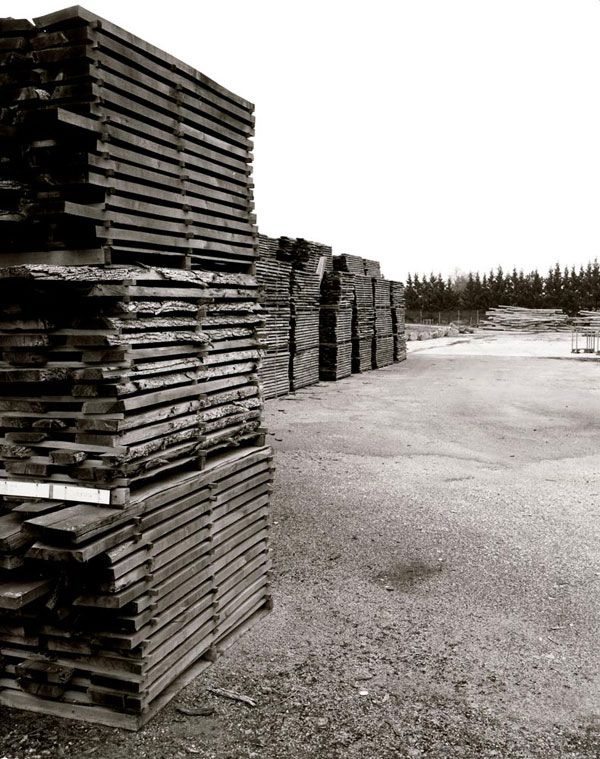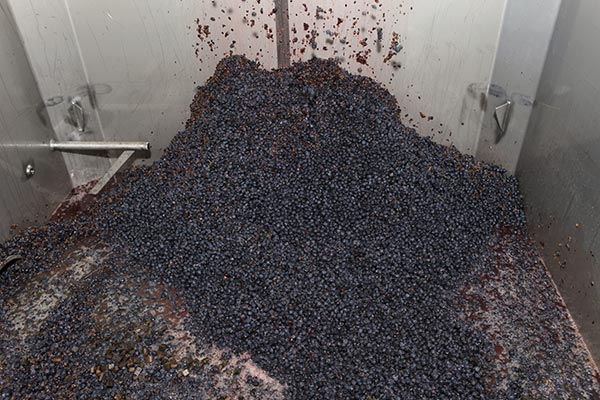How do I purchase your products?
If you are a home winemaker we sell through resellers, please see our online listing. We sell directly to North American wineries. They can call, e-mail or send a quote request form. Wineries outside of North America can purchase products from our international agents.
What makes you different versus all the other Barrel Alternative suppliers?
We are a true Barrel Alternative as StaVin fire-toasts its products to reproduce the complex flavors and aromas of barrels. We also will combine our 3 toasting protocols to replicate any flavors you are looking to achieve.
Why do StaVin products seem so expensive compared to other barrel alternatives suppliers?
Our partnership with those who go into the forest to select the best plots runs very deep and over 28 years. Our oak staves are air-seasoned a minimum of 3 years and hand-sorted a minimum of 5 times before packaging. Our quality control managed by our 2 Ph.Ds is 10 times more effective than any other company in the business. Our toasting protocols are conscientiously managed to deliver maximum aromatic and flavor quality to your wine. Consistency and high quality are the main objectives we have strived for over these last 28 years.
Do you test your products for TCA and other halo-anisoles?
Yes every stave is tested for halo-anisoles. We test our oak just like you’d test your cellar, using highly sensitive bentonite trapping enhanced with blowers in conjunction with ETS Laboratories analysis.
Other companies say their testing is better since they analyze for chloro phenols as well as anisoles.
Unfortunately, this is not true. Testing for the chloro phenols requires sampling of the oak itself and extraction. This protocol is much like testing for anisoles in cork closures. Which means that it’s highly improbable (next to impossible) that you actually sample that one piece of oak that may be contaminated.
How much oak should I use with my wine?
This depends mostly on personal preference. However, the StaVin Oak Calculator can be helpful in determining how much a particular StaVin product should be used to achieve a given oak impact. Remember it is always easier to add more oak later than to remove oak flavor. Using the trial 8-pack is another easy means to determine how much oak is needed for any particular wine. Each pouch has enough Oak Beans to oak a 750 mL bottle to about 50% new barrel impact.
What type of product should I use for my wine, Beans, Segments, Replicas, or Stave Fan Packs?
There are 2 main factors to take into account here, amount of maturation time on oak and economics. To a lesser degree rate of flavor extraction plays a role. Basically, less time, use a smaller product size, such as Beans versus Staves. Economically you will always get more bang for the buck with Beans versus Stave Fans. However, if you have time and are looking for the best integration of oak flavors, Staves are the best option.
What type of oak and toast should I use for my wine?
(a.) The best means to determine what works best is to use the StaVin Trial 8-pack. We have made up easy-to-use pouches of oak of each available source: American, French and Hungarian. In each available toast level: Medium, Medium Plus and Heavy. As well we have added a fourth pouch which contains our Savour Oven Toast product which is available in only 1 toast level. There is an additional pouch with each toast level and the Oven Toast with 25% Barrel Head added. Add each pouch to eight 750 mL bottles of wine and allow to soak for 1 week. One week only! As leaving them longer may cause significant over-oaking of the wines. Each label on the packs can be cut off and applied to the bottle to help keep track of your trials.
(b.) After 1 week taste the trials and determine first, if the amount of oak is enough or too much for your wine. These pouches will give approximately 50% new barrel impact in 1 week. Then determine which toast level works with or without Barrel Head works best for your wine. It might be that the best toast is actually a mix of the 2 or 3 pouches.
Which StaVin product should I use?
There are 4 variables in the selection of the proper product for your application. Oak origin, toast level, concentration and product size. Oak origin, toast level, and concentration are all based on personal preference. We have sample packs that we can send to demonstrate and help you choose which works best in your wine. Product size is dependent on timeline, storage container, and economics. Beans extract quicker and give you more impact per dollar spent. Stave Fan Packs give you the slowest extraction and best integration. Oak Segments give you an even slower extraction timeline yet, and are available in a nylon bag for easier movement between tanks. Replicas and Infusion Tubes are best used if you are storing your wine in neutral barrels.
How much do I need?
Once you have decided which product(s) you want to use, you can use StaVin’s Oak Calculator to provide you with the specifics of how much you will need to order for your application.
Can I reuse the oak?
You can reuse the oak with one very important caveat; it needs to be immediately transferred into another wine. StaVin products should not be stored once they have been used.
How long can I store unused product?
If the oak is sealed in its poly-metal bag, it is good for over 5 years from the date of purchase. Once the packaging has been opened, it is exposed to your cellar conditions. It should be used immediately or resealed to the best of your ability.
Do you have a solution to minimize green characteristics?
Minimizing vegetal or green characteristics gets significantly harder as you get closer to bottling your wine. The best time for minimizing green characters is in the vineyard. Once the grapes are harvested, oak and oxygen can have a beneficial effect to minimize green character. (More about oak and fermentation) For post fermentation we have developed a blend of oak we call the green solution. We have sample packs available to determine if this solution will work to minimize vegetal characters in your wine.
Which product delivers the most vanilla?
Our Savour Oak convection oven-toasted products generally give a higher vanilla aroma to your wine. For even more vanillin impact add our Barrel Head Oak at a ratio of 3 parts Savour to 1 part Barrel Head.
Do we need to micro-oxygenate?
The addition of small amounts of oxygen can be beneficial in the integration of our oak products and the maturation of the wine.
What is the best way to put the oak into the wine?
The optimal way to utilize the oak is to attach the fans/bags to C-rings located around the perimeter of your tank. If a large amount of oak is going to be hanging, we have stainless chains that can be threaded through the C-rings to distribute the weight evenly across the entire circumference of the tank. It is important that the oak does not float on top of the wine so you maximize the extraction and minimize the potential for microbial growth.
How do you get Barrel Replicas in and out of barrels?
The optimal way to get Barrel Replicas in and out of the barrel is to have the barrel be empty and to ensure that each section is perpendicular to the bung hole when adding or removing the oak.
What would I use for 5-gallon glass carboys to get good oaking results? I usually bulk age both chardonnays and reds for 10-12 months.
For new barrel extraction rates, the recommended ratio is 1.5 – 2 lbs of Oak Cubes/Beans to 60 gallons, (i.e. @ 2 – 2.5 oz. for use in a 5-gallon carboy). We always recommend that you start with the lighter ratio for first time use, as you can always add more oak after 8 weeks. We recommend a minimum contact time of 8 weeks to allow for the full integration of the oak flavors. Also, as you will be aging the wine on the Oak Cubes/Beans for a year or so, you may even want to bring the ratio down a little lighter.
Where are Alan, Steve, and/or the Jeffs?
Always hard at work on something. Give us a call, we are always glad to talk.
All images © 2014-2023 StaVin Inc.

